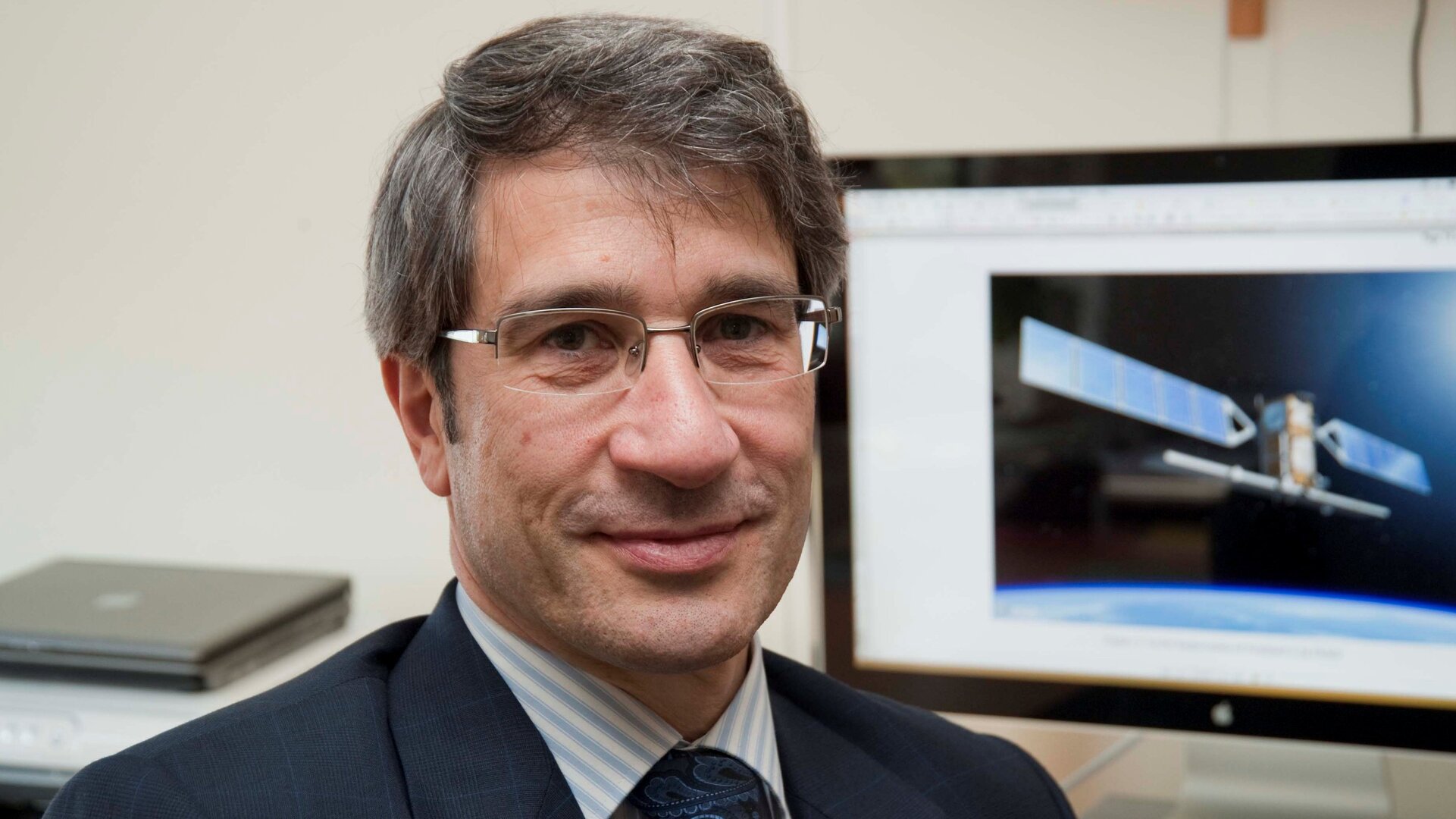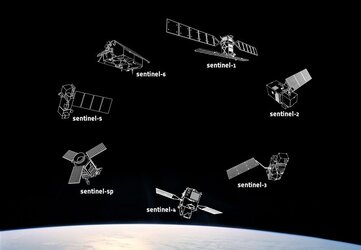Guido Levrini: Copernicus Space Segment Programme Manager
Guido Levrini is responsible for managing the space segment for the Copernicus programme. This includes overseeing the development of the six Sentinel missions. In an interview, Guido talks about his role and how the different missions complement each other.

Guido Levrini, an Italian national, joined ESA in 1995 as Section Head in the Envisat project, with the responsibility for the Envisat instrument processors. Later, he was responsible for the mission’s microwave instruments. In 2002, he coordinated the Envisat commissioning phase. Guido has worked on Copernicus, formerly known as GMES, since ESA became involved in this novel monitoring programme.
Prior to working for ESA, Guido spent his first 12 years of professional life in industry, on projects such as ERS-1, X-SAR, Rosetta, Artemis and Envisat. Guido earned his Electronic Engineer qualification from the University of Rome, Italy.
ESA: What does being the Copernicus Space Segment Programme Manager involve?
Guido Levrini
My job can be split into three main areas. First of all, I manage a team of people; this means talking, listening, explaining, reflecting together, exchanging ideas about all aspects of our work. This is the ‘empathy’ bit.
Secondly, I support my hierarchy in how the programme is constructed and its evolution, I maintain a constant dialogue line with our Member State delegates, I am involved in the negotiation of Agreements with partner organisations such as the European Commission, Eumetsat and our own Member States, and I am engaged in starting the new Sentinel projects before a proper project team is set up (i.e. until the Phase B2 kick-off). This is the ‘fuzzy logic’ bit.
Thirdly, I oversee the approved and on-going Sentinel projects: this last task requires much less effort than the previous ones. This is thanks to the quality and professionalism of the Sentinels Project Managers and teams. So, my interventions are rare, it is mostly about listening. This is the ‘orchestra director’ bit: you do not make any sound yourself, but you take care that the team plays the right tune, as an ensemble.
ESA: What are the most challenging and rewarding aspects of your job?
Guido Levrini
Copernicus is about being the first in the world to build a comprehensive system for the operational monitoring of Earth from space, in coordination with non-space systems and in cooperation with a new space actor, the European Commission.
The most challenging aspect is, without doubt, the fact we are cruising uncharted waters, the most rewarding aspect is… this very same element.
ESA: The Sentinels are built to deliver data for applications rather than for scientific research, does this make a difference in the process of development?
Guido Levrini
Yes, it does make a difference. People may be tempted to believe that instruments for operational applications are made of available pieces, recurring elements, well-mastered technology, that they are somewhat simpler than top-of-the-line scientific research tools. But, this is not the case for Copernicus.
With the Sentinels, we are developing an extremely wide range of new technologies. It is not simply that we did not have the system when we started – we didn’t even have the pieces to construct the system. Today, we can proudly say that each Sentinel constitutes the highest performing mission in its own domain worldwide; their development represents an incredible effort. Given the political attention and incredible scrutiny that Copernicus has attracted, you are not allowed to make the tiniest of mistakes: this is a unique situation.
ESA: Can you briefly explain the difference between the six Sentinels and how they complement each other?
Guido Levrini
The Sentinels only make sense if you appreciate them as part of one system, the Copernicus system, and not as a collection of isolated satellites.
The same way as when you do a medical check-up, you don’t just take a blood sample, but you go through a full array of tests using different instruments and techniques. Here, we do the same, we use a full range of instruments and techniques to be able to achieve a ‘complete monitoring’ of the state of our planet.
From radar and microwave techniques (Sentinel-1, part of Sentinel-3, Sentinel-6), characterised by all weather day and night operation, specially suited to supporting emergencies, ship routing, ice monitoring, oceanography and subsidence; to Earth observationpar excellence, optical imaging (Sentinel-2) specially targeting land characteristics (e.g. land use, land change); to spectrometers designed for assessing the quality and characteristics of waters (part of Sentinel-3) and of the global atmosphere (Sentinel-5 Precursor, Sentinel-5) with special emphasis on following rapid evolutions over Europe (Sentinel-4).
ESA: As the former Sentinel-1 Project Manager you must have a soft spot for this particular mission, how do you feel as launch approaches?
Guido Levrini
You are not allowed to love any one of your children more than any other, and you don’t. Being a Project Manager is an especially rewarding experience. Sentinel-1 was not my first project – and in any case I left it in the very capable hands of Ramón Torres, who has taken care of it better than I could have ever done – and every role in a project is essential and rewarding. It is working in a project that is truly special. The best feeling is to accomplish something difficult and to do it together.
This launch, the launch of the first Sentinel, is indeed an historical event for Earth observation. For me, personally, it is turning a page on 10 years of investment and efforts and for the citizens of the world, a new era of knowledge and awareness is opening.
ESA: What advice would you give to anyone thinking of working in the space industry, in particular, industries linked to Earth observation?
Guido Levrini
The rare feature that our profession offers is to do something interesting from a technical point of view, doing it in a team of equally committed people and contributing to something that is socially useful and important.
Working in space also requires intellectual honesty (you can’t cheat nature) and rigour (space projects are very complex). Well, if a young person values these aspect in his or her job, then Earth observation from space is the right choice.
Editor's note:
This is one in a series of interviews with a few of the key people that are involved in the Sentinel-1 mission. Please check back as the list will be added to over the coming weeks.






